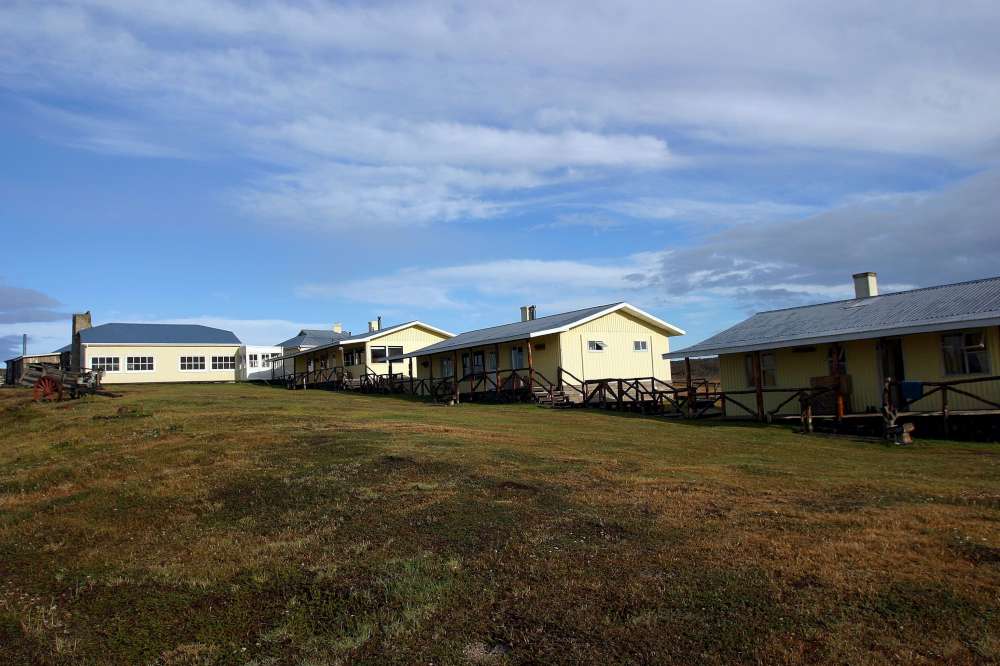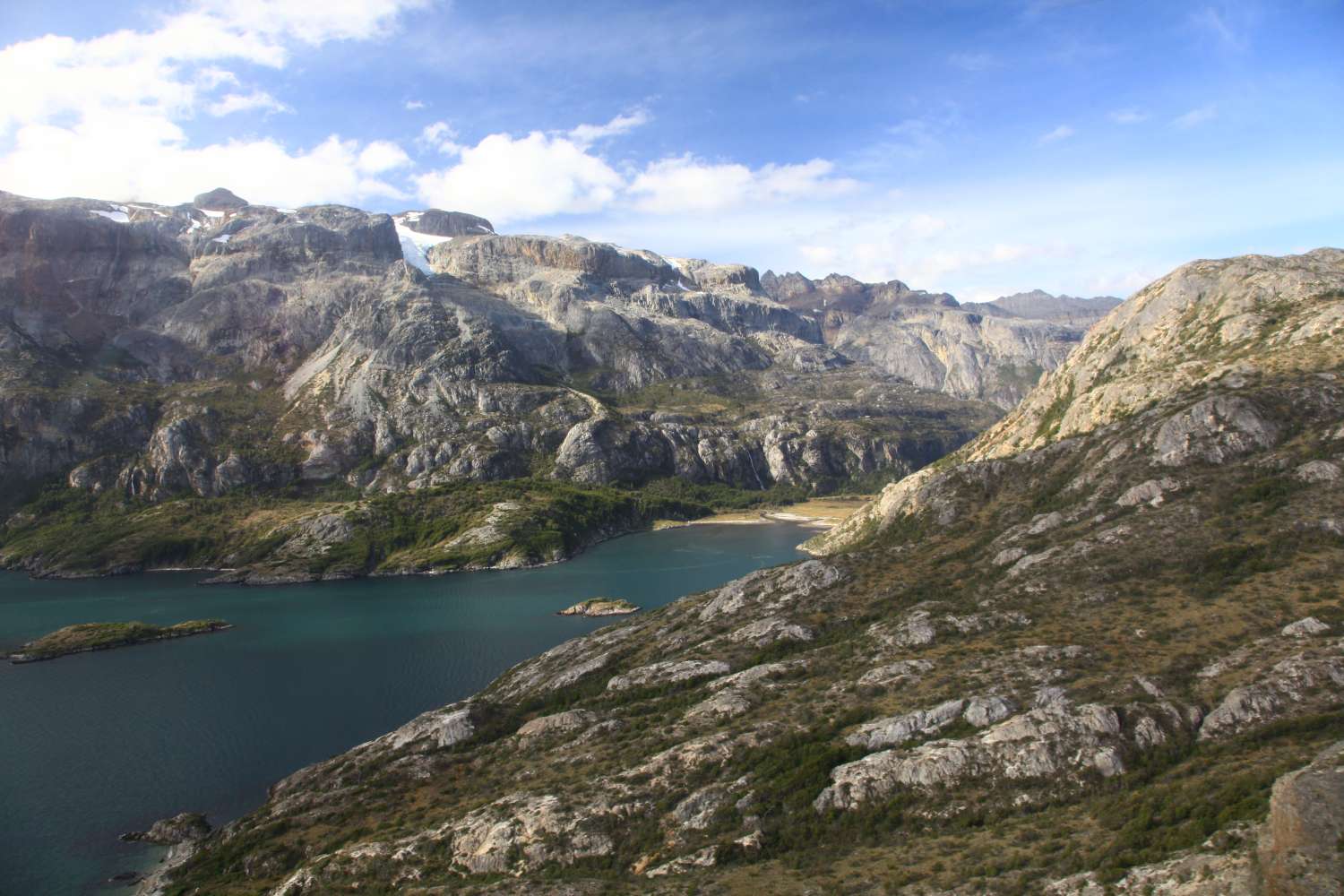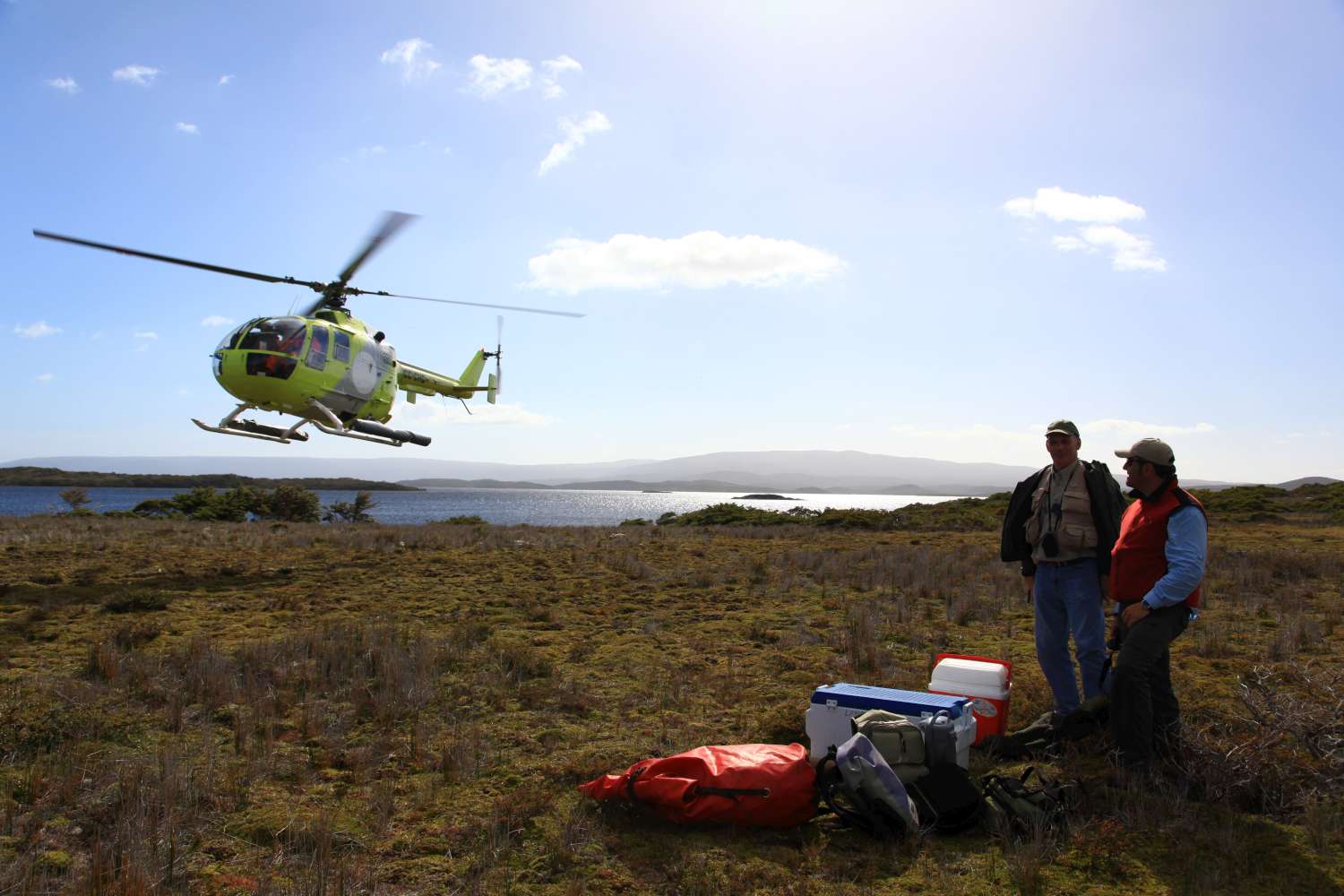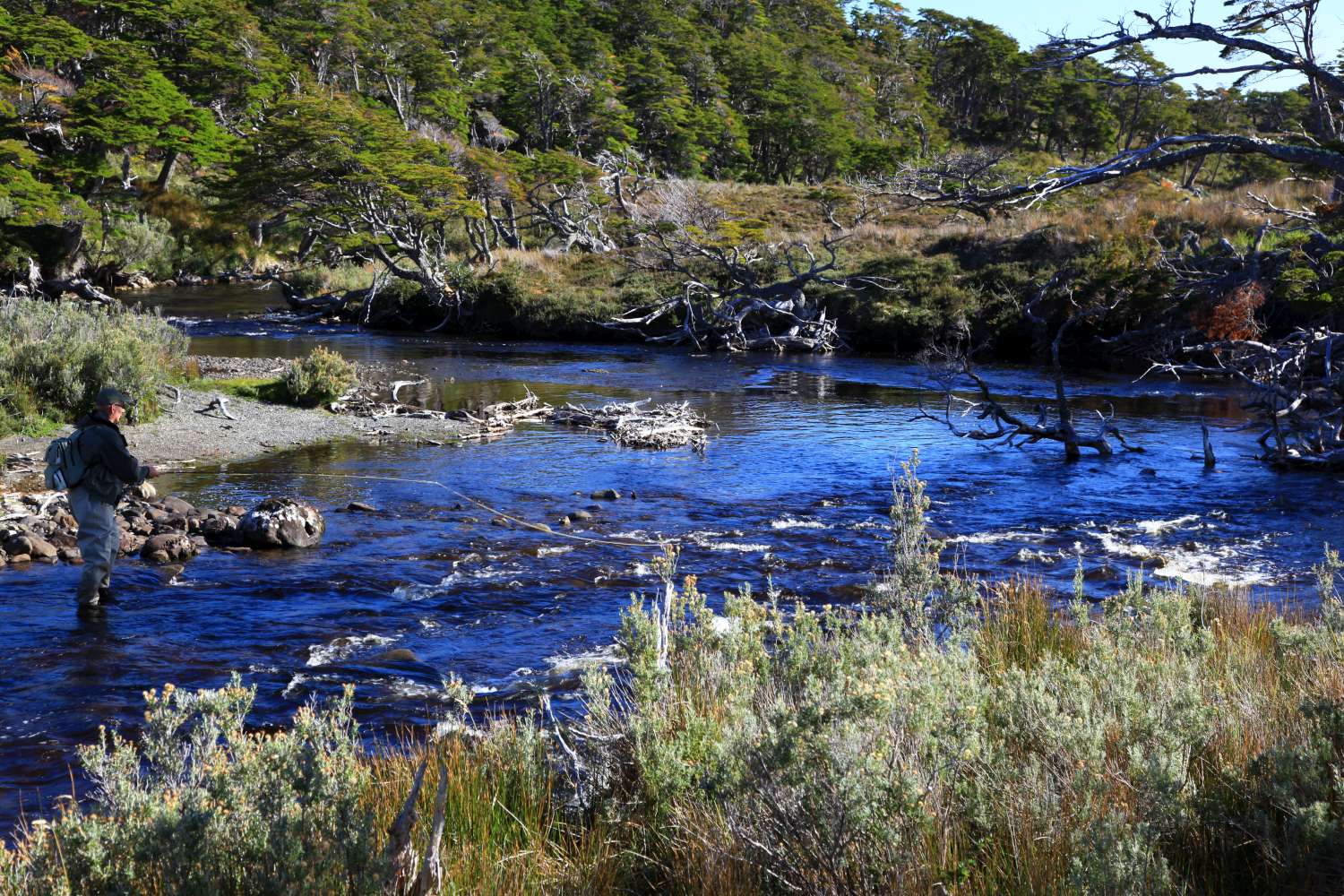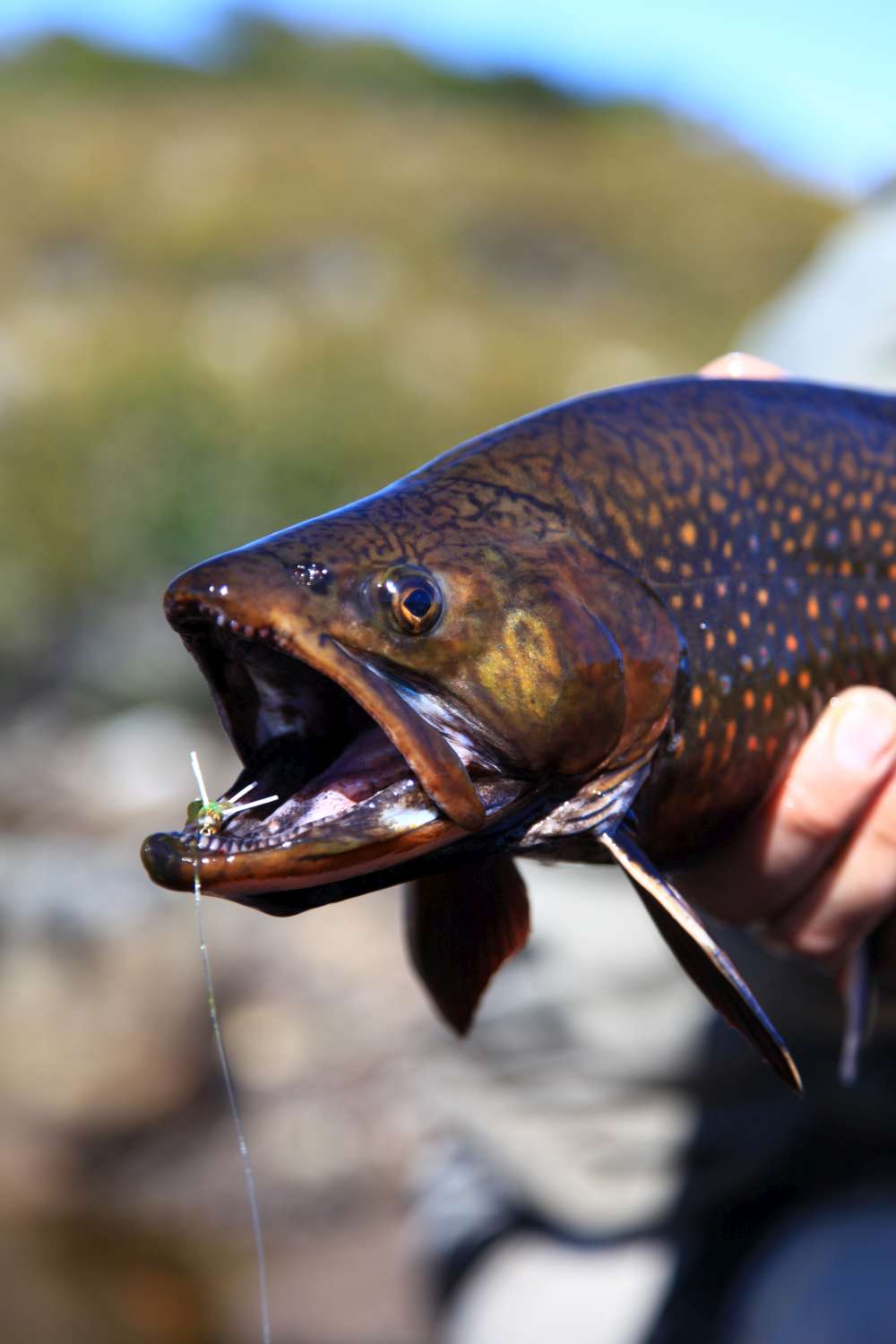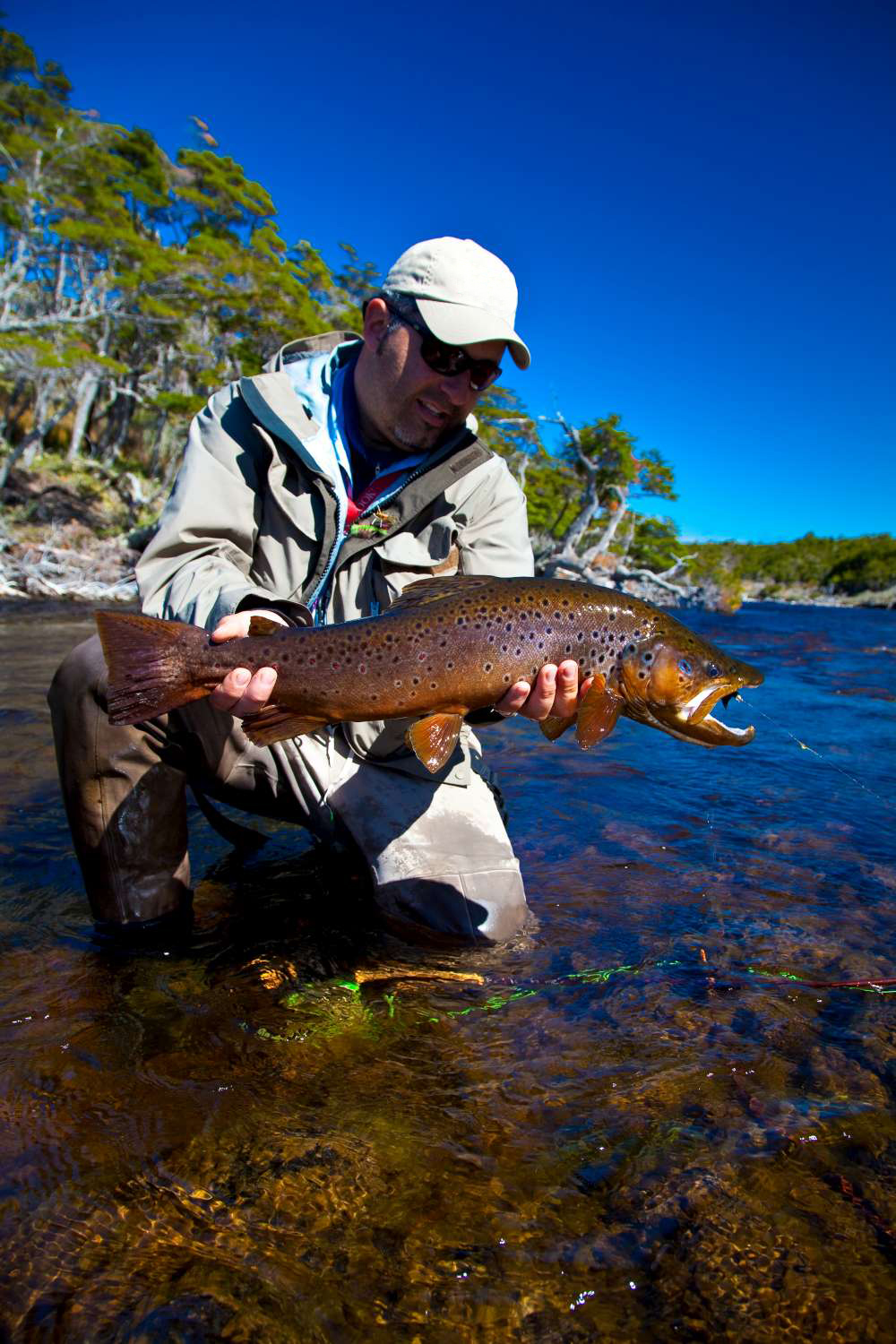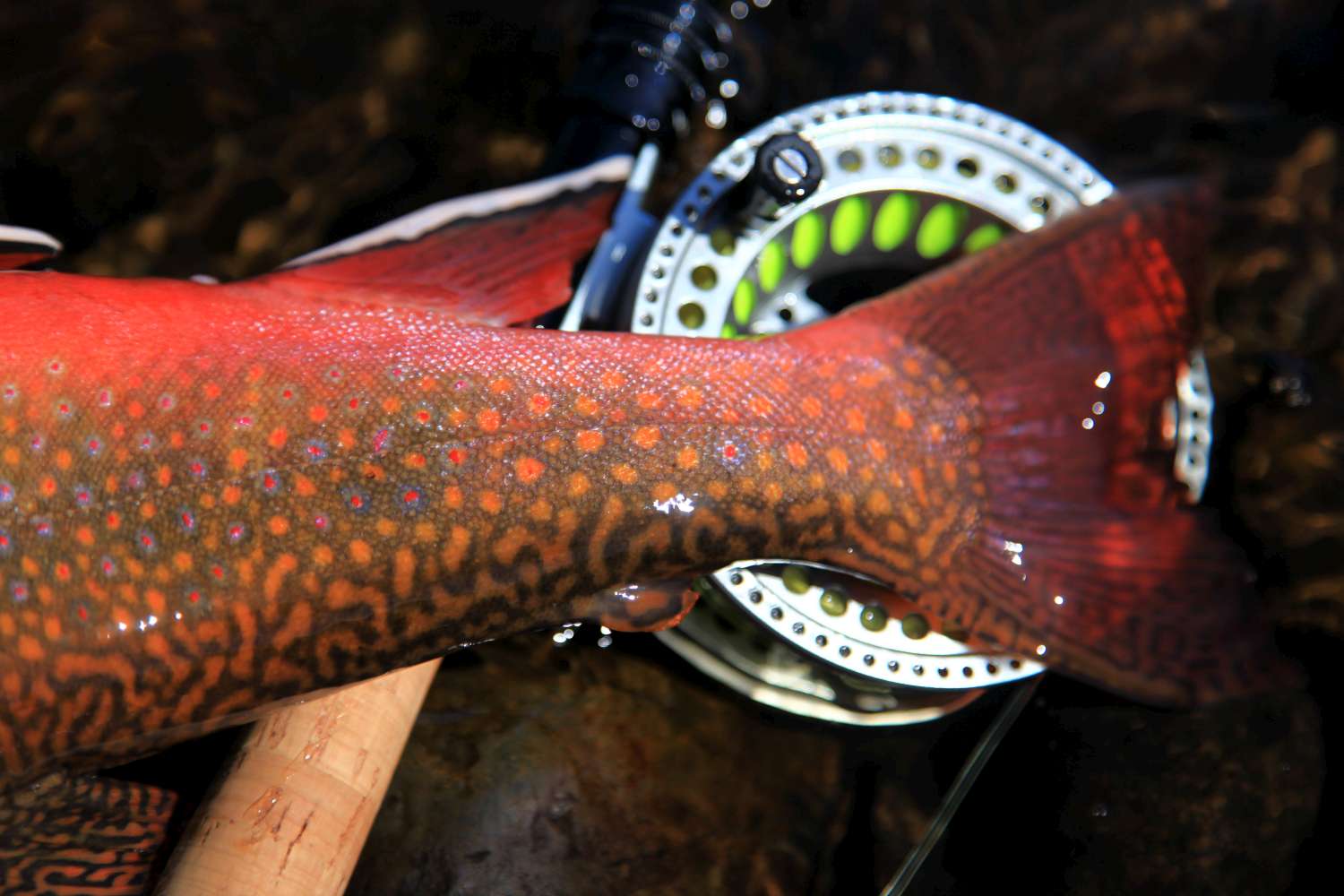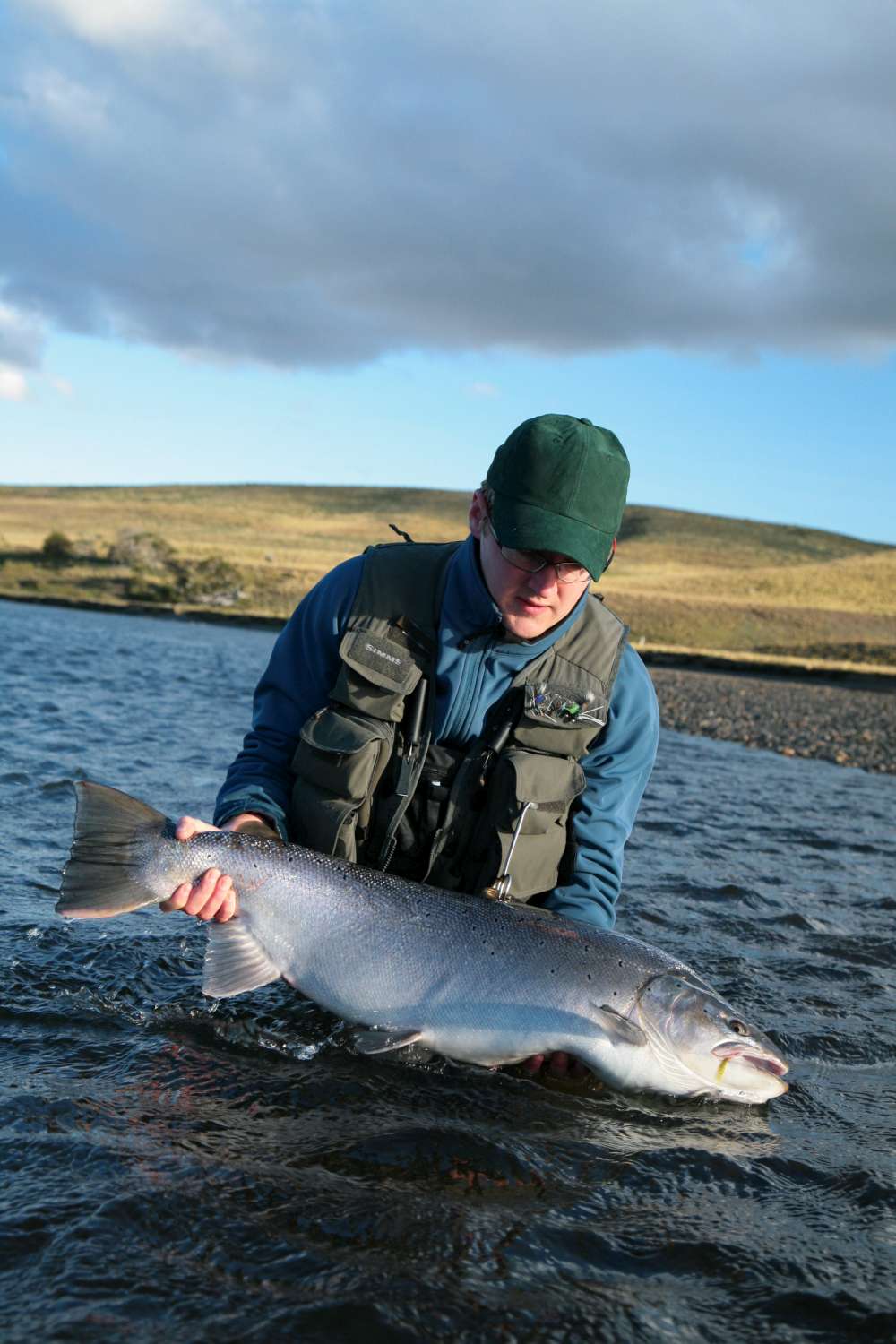Numerous magazine articles and chapters in angling travel guides have been written about fishing in and around the Ushuaia area of Tierra Del Fuego (TDF) pontificating that this was the southernmost place in the World where Salmonids could be encountered and caught. This always struck me to be a rather strange, bold and rather unsubstantiated statement, especially with the frontier of Navarino neither mentioned nor explored, yet with only a small strait, the Beagle Channel, separating it from Tierra Del Fuego surely some fish would have made the short voyage across the strait, which is as little as 3 miles wide in certain sections.
On my annual pilgrimage to Argentina and Chile an opportunity arose that supplied an enviable opportunity to test and answer the aforementioned theory and provided an opportunity that had never been undertaken before, one that I was most unlikely to refuse.
My favourite area of TDF is the Chilean side, without question. Sure, you can fish the Argentine side of the revered Rio Grande and indefinitely have a larger population of sea trout to target by doing so. However, there are very few contingencies, if any, should the river be too high or too low, which can equate to a lot of wasted time and money. Further to this, I find the scenery to be very monotonous, windswept and downright boring on the Argentine side, with little to hold appeal outside of the gargantuan sized sea trout. Venture Westwards into Chile and the scenery changes with almost every mile you travel. Soon enough you have an extension of the Andean mountain range in the distance, trees begin to canvas the rolling plains and wildlife is abound. Where the main attraction lies, however, is with the fishing, of course. Over half the Rio Grande flows on the Chilean side, you then have the rios Azopardo, Catalina, Blanco, Condor to name but a few, along with an immense variety and myriad of lakes to fish, all holding good levels of fish ranging from brook char, brown, sea and rainbow trout, with some even holding steelhead and the occasional king salmon! As you can see, the attraction is pretty obvious.
This is where my journey began; sat at the lodge catching up and chewing the fat with the fishing manager at TDF-Lodge, Rafael Gonzales who has fished this area for decades. With the pleasantries out the way Rafael suddenly announced that he had a special surprise lined up for me – a chance to fly-out by helicopter from the lodge to fish and explore the waters on Navarino Island. There were no promises about the quality of the fishing, if, indeed, fish existed in the systems at all. However, the journey there would be spectacular and with the walk alone for the nearest inhabitants – Puerto Williams, being home to around 2,000 inhabitants – being eight hours to the river we proposed to fish with no roads linking it with any houses it would be a once in a lifetime exploratory that was totally engrossing.
The plan was for a helicopter to arrive the following morning from Punta Arenas (mainland Chile), land in front of the lodge, load our equipment and head straight out. Thankfully the area was experiencing uncharacteristically good weather; no wind, clear skies and 25 degree sunshine – hardly what one has come to expect when visiting TDF!
A largely sleepless night was spent eagerly awaiting the arrival of the helicopter the following morning, with the mind skipping between the epic helicopter journey that awaited along with what would be present in the system to be explored. No wake-up calls were required and my eyes were open hours before my alarm clock decided to bell. After a quick breakfast the chattering of the helicopter blades could soon be heard bellowing across the plains, scaring all guanacos in sight. A large dust cloud was sent spiralling all around, spitting out debris as the helicopter slowly descended, finally landing gingerly on the grassy paddock. We were ushered quickly onboard by the pilot as the co-pilot loaded up the ‘trunk’ with our supplies and equipment and no sooner had it landed we were airborne. The little five seater was a nimble little creature, able to land on almost any terrain. It was mainly utilised by the oil-rigs, which are dotted around the Chilean and Argentine coastline of TDF.
Soon we left the soft rolling hills and encroached the mountains that had been overlooking the lodge and could be clearly seen whilst fishing the Rio Grande. This is where the true spectacle began, unearthing vistas that could never truly be appreciated from ‘terra firma’ or even reached. We were soon hovering over glaciers, hill lakes, condor’s roosts, mountain streams and truly virginal terrain. It left me in awe as to what our planet has left to offer, unmolested and uninhabited. The mountain range was crossed and the Beagle Channel could be seen in the distance, with Navarino Island looking ever inviting beyond.
TDF was split acrimoniously in the Boundary Treaty of 1881. The Eastern side was held by Argentina with the West by Chile. No fish worth mentioning were present in the rivers of TDF around this era, so there was little reason to consider future touristic value of the likes of the Rio Grande at this time – indeed, the forests and mountain range of the West would be far more appealing and hold more value than the barren plains to the East. Islands to the South were given to Chile, including Navarino. However, war almost broke out between the two nations in 1978, as Argentina contested the sovereignty of some of the smaller islands to the East of Navarino, and later the Falklands with the British.
Today Navarino is a sleepy port, akin to the larger port of Ushuaia across the water, though much smaller than its Argentine counterpart. The landing strip runs alongside the port on a jut of land protruding into the channel. A short stop to refuel, pick up provisions and we were airborne again skirting around the North face of the island until the first of a series of interconnecting lakes was found. All of these lakes flow from North to South the first of which being lago Rojas then lago Pollollo finally emptying into lago Navarino, which is the largest of the three. Rio Navarino flows out of lago Navarino, flowing out towards Cape Horn at the south side of the island. This river is located at around 55.2 latitude; this can be compared to the likes of the southernmost point of New-Zealand that is located at a respectable 46.6, with Rio Grande on TDF at 53.8.
We decided to start our exploratory by being dropped off at the very start of the river system, where the lake first transforms into a river. This would allow exploration of the lake and river, with the usually highly productive ‘boca’ section – the area where the lake begins to flow as a river – given a fair hearing. The lake itself turned out to be immensely deep, with a largely sheer drop from the offset. As such, this area was sacrificed for the first few pools that formed in the river system, which, although still very deep, had good structure and fish holding characteristics. The river wasn’t very wide, probably 20 metres wide at most but had a nice gradient, which helped form perfect shoots into small, undulating pools.
An intermediate line was cast across the current with a tungsten conehead black rabbit leech pattern with rubber legs – these rubber legs seem to almost be a prerequisite of a lure in this part of the world! The line drew deep into the pool and took hold in a converging current undulation. Steady pulls resulted in nothing, but as I drew to recast I felt a tug and noticed a shadow rushing from the depths. However, it was not after my fly, it was trying to engulf my braided loop! This really astonished me – these fish could not have had much fishing pressure if they were chasing braided loops. Soon enough the fish found the offering a little further down the business end and the first fish was firmly attached.
Soon enough brook char after brook-char were brought to hand, some of which being certainly over the 3lb mark. These are often called brook trout, but they are firmly in the char family, with the lack of scales affirming this. Brook char really are a prize catch, hard fighting and exquisitely adorned, captivating the beholder. Ok, so the system held brook-char, and in good numbers, great news. However, what of the brown and rainbow trout? Surely if the char had made it across then they would have too? And then, hopefully, the sea trout as a result as the sea trout of the Rio Grande started life as mere brown trout introduced from the Scottish Loch Leven strain decades before. There was a fairly high concentration of fish in the pools, with enough snails, leeches and shrimp to sustain a given number, but probably not enough to sustain the bulk of the population. Such is the case on the Rio Grande, hence why they eventually decided to turn seawards in search of richer feeding.
We had only explored some three pools on the system thus far with the helicopter arranged to meet us around half way down the system time was pressing so we stepped up a gear and made good headway over the river’s course. Soon enough the river became a classical freestone river, rather reflective of a Scottish highland spate river. The brown and rainbow trout obviously found solace in this terrain and were soon encountered in good numbers, especially the browns. Indeed, the first I hooked was probably the biggest wild brown trout that I had caught in flowing water, weighing around the 8lbs mark. The tail of the fish highlighted some well-healed battle scars, akin to those found on the fish of Jurassic Lake in Argentina, where fish of a similar size often suffer such injuries whilst traversing relatively small streams on their spawning run.
The smallest brown trout encountered over the next leg of the journey was still an impressive 2lb or so, with the rainbow trout holding a smaller average size, with probably the largest being around the 3lb mark. The rainbow trout were also fairly emaciated, which was surprising compared to their brethren that appeared full of vigour. This is also found, at times, in some of the lakes on TDF, where the rainbows choose to feed on very different fare to the browns, often to their own detriment.
After a good hike downstream the character of the river soon changed; the valley widened and the gradient decreased, reducing the flow as a result. We were now reaching the middle and lower reaches of the system, where another river of around the same size joined. This is, however, where the journey had to end as the helicopter was scheduled for 7.30pm and this was a suitable place as any to pick us up. What a journey it had been, a true adventure and exploration of new frontiers. A rare opportunity and insight that one can only feel privileged to have experienced.
A twist of fate the following day allowed a return trip to the Rio Navarino as low cloud prevented our passage through the Andes to return to the lodge. No hardship and an act of god that we would certainly use to our advantage. We would only have two hours to fish, as the weather forecast showed a change in conditions after this that would allow safe passage back to the lodge. Time enough to fish another section, but certainly not enough time to travel from source to sea.
The helicopter landed on a gravel bank alongside a deep pool just below the confluence of the two rivers. The river was a lot peatier down here, and held a lot less bankside vegetation and weedbeds. This was largely put down to the second river, that, rather than being lake fed, was fed from the hills, and was a lot more acidic. The pools, however, were much more appealing in this section and if sea trout were to be found anywhere then this is where they would be, especially as the reaches just above the confluence were literally inches deep at this time, preventing the passage of any anadromous fish.
These reaches seemed largely devoid of fish, other than very small brown trout, which didn’t come as much surprise due to the acidity and reduction in food levels. However, the other end of this coin is that these reaches would be ideal for sea trout, as they do not pursue sustenance, just security, which these reaches held in bucket loads. Indeed, the lack of resident trout would make it easier to get through to the sea trout, with the fly being unmolested by ‘distraction’ species. A good length was fished down, but the conditions were hardly conducive to good daytime sea trout fishing – sunny and windless. None were encountered but I would bet my last rod (of which there are several more than my girlfriend has been led to believe!) that they are present. Sadly this would take further reconnaissance and watching the river for rolling fish on dusk, reconnaissance that I would not be around to undertake, not this time anyway. But then this trip was always about scratching the surface and we knew that we would never be able to explore the system in its entirety or to the degree it deserved. However, if nothing else the trip sowed the seed for future explorations and provided a knowledge base for future anglers venturing to the now not so unknown. It also helped put Navarino on the map from a fishing perspective and, more importantly, disprove the fact that TDF was the southernmost place in the world where trout could be caught.
The return trip to TDF-Lodge was a rather solemn affair, as Navarino disappeared almost as quickly as it had appeared. An audience had amassed upon our return, all waiting eagerly to see how we had faired. It was, of course, difficult to contain our excitement, as the trip was truly one that will remain vivid until the end of our days. However, sport had been good at the lodge with some fine fish being landed on the Rio Grande. As such, envy was not aired, just mutual excitement.
Before departing for home there was one more chance to wet a line on the Rio Grande, one final farewell, if you wish. With it being February and many months before sport would begin in earnest back home, every opportunity to address the fishing addiction would be taken! There was a slight upstream wind and the Grande was holding a nice level – a few days before a fresh 33lb sea trout was taken on the Argentine side, so we knew plenty of fish had made use of the recent spate and the spring tides. The evening remained mild and overcast, perfect conditions and conditions I pray for when fishing for sea trout at home. Fishing after sunset isn’t allowed on the Argentine side, but not so on the Chilean side, thankfully. As such, we could make good use of the prevailing conditions.
The sea trout on the Grande do rather follow the same characteristics as the sea trout on my home rivers, especially as they become more active as the light fails. There is one significant difference however; these are bigger, much bigger! While a smaller sea trout cleanly clears the water on a leap on dusk, these fish have difficulty becoming airborne.
As the light fails the flies get larger, and soon enough long leech patterns are utilised, allowing patterns of over 3 inches to be used with ease. There’s little need to strip or aid the swing of the fly, it’s more of a case of hold on tight!
Takes came thick and fast as fresh fish could be seen entering the tail of the pool in almost a conveyer belt fashion. Some were lost, but it didn’t matter, as the next couple of casts would inevitably find a new candidate. For me nothing beats night fly fishing for sea trout. The take is just amazing as all your senses are heightened. It is truly exhilarating and this trepidation of the unknown is rare, but somehow consuming. Where is the fish? Are there any snags? Where’s the best place to land the fish? All of these are perfectly apparent in the daytime, but night time brings an interesting angle to these questions.
Specimens to 18lb were landed before the guide brought an unexpected and premature end to the sport – he had managed to stick his jeep wheel deep in mud! Where it was a case of all hands on deck to free the undercarriage. To this day I recall that evening – what a way to end an amazing trip. Needless to say my fishing fix was well and truly fuelled for months to come.
Steffan will be returning to Cameron Lodge and Navarino Island in early 2013, this is your chance to join him on the trip of a lifetime. For more details contact Steffan by email: [email protected] or call: +44 (0) 1980 847 389.

